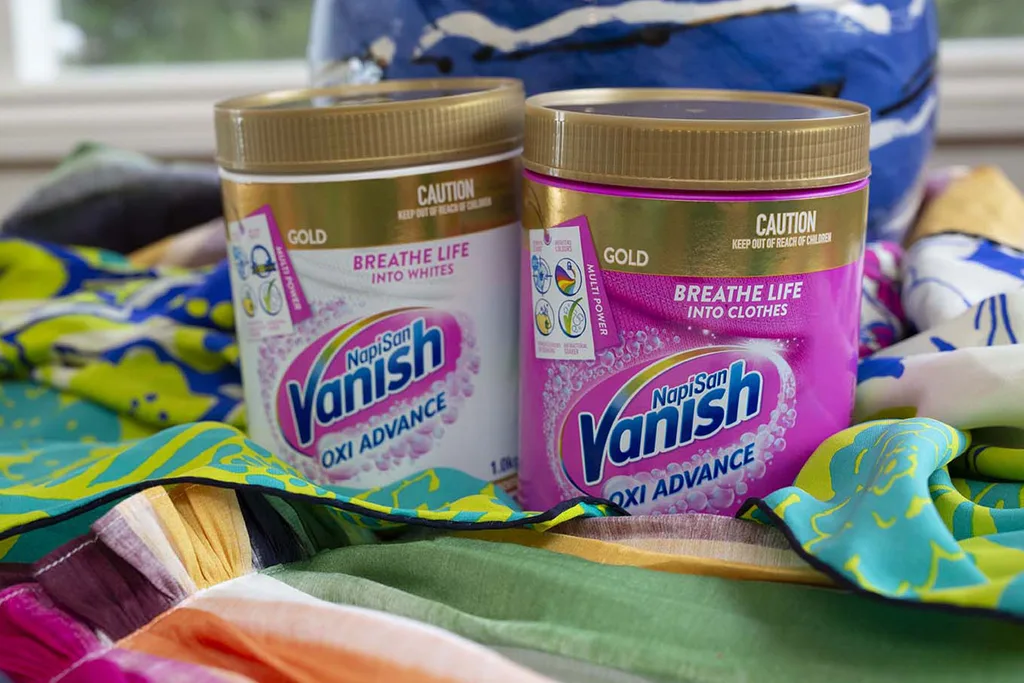We’re all guilty of it—buying a statement outfit for an event only never to wear it again; hauling at the start of the season with multiple pieces never seeing the light of day; or Marie Kondo-ing the wardrobe only to see replacements slowly added the week later.
We’re a nation of fashion consumers, but with 6000kg of clothing being tossed away every 10 minutes1 our land is bulging with the aftermath of our love affair.
It’s a worldwide issue and like any worldwide issue it can feel overwhelming, like you—just you alone—can’t make a difference. But you can. And collectively, we can do this together.
Here, 10 ways to create a more sustainable wardrobe and approach to fashion without very much effort at all—and help #MakeTextileWasteVanish.
1. Buy once, buy well… if you can
Affordable, fast fashion has its place—it’s perfect for those on-trend pieces—but where you can afford to, invest in timeless, quality pieces you can #rewear again and again and know they will go the distance. Think capsule wardrobe: a little black dress, white t-shirt and signature blazer. The amount you invest upfront will pay dividends in cost per wear.
2. Support second-hand
Op shops, vintage shops, markets, swap meets and online marketplaces—780,000 tonnes of clothing is donated to charity each year by Australians, so the more of us on board with giving pre-loved pieces a deserved encore, the less of this clothing will end up shipped overseas as part of the second-hand clothing trade. Did you know the overflow from Western World charities are sold to third-world countries where the quality items are resold but the rest—majority of which are of poor standards—is discarded into landfill*? Well, now you do.

3. Care for the clothes you have
Stains, tears, rips, missing buttons and broken zips—with fast-fashion so affordable it can be easy just to cut your losses and buy new. But by spending a little money at your local tailor (or learning to make small repairs) you can save your pieces from a dire fate.
Washing too. Instead of just piling everything into the washing machine or—if you’re really ‘adulting’ breaking it into whites and colour loads—be sure to follow the washing instructions on the label. It’s not there to make your life hard, it’s there to ensure you get longevity out of your pieces. For tough stains, invest in the Vanish Gold Multi Power range. Available at supermarkets, it’s the Vanish gold standard of chlorine-free laundry booster powders, removing tough stains better than detergent alone, brightening colours, whitening whites2, removing odours3, and is antibacterial in soaking, which doubles the life of your clothes. The end result? You can love your clothes for longer and keep them out of landfill. Just be sure to check the label for suitability before you wash.

4. Sell your top ticket items
Gumtree, eBay, Facebook Marketplace—there’s always been ways to sell your prized label pieces after they’re no longer serving you. But a new take on this is re-commerce play Airrobe, a platform which allows you to shop, resell, rent or recycle your pre-loved items. This is big business to, with the value of the resale economy expected to double by 2025 reaching US$77 billion ($106 billion).
5. Donate thoughtfully
With that in mind, if you buy well you shouldn’t need to donate as much—currently the average Aussie gives 12.1kgs of clothing to charity per year—but what you do donate is still of a standard where you would wear it. If it’s not good enough to give to a friend, then it’s not good enough to be resold either here in Australia, or overseas4. Also be sure to give your clothes a wash before putting them in the donation bin, and remove any stains with a remover such as those in the Vanish Gold Multi Power range. And if you really want to be sure your donations don’t end up in landfill, bag up your goods for a better cause. Upparel, for example, is an Australian initiative which recycles your unwanted items with nothing tossed or sent off-shore.
6. Rent the runway
Sure it’s nothing new with the likes of Glamcorner, Dress Hire AU and The Volte now regularly exchanged recommendations whenever someone needs a special outfit for an event, but you can now also be part of the movement by offering up your outfits for rent on The Volte as well as Outdress, Rent a Dress and Designerex—peer-to-peer services connecting lenders with renters. It’s also a way to generate passive income with some lenders reportedly making up to $1500 a week, according to The Volte.
7. Look for local
For bonus points when shopping, support companies which use locally sourced materials and manufacture in Australia, as it is likely that less transport emissions are produced. Currently only 29 per cent of respondents to the EY Australian fashion and textile industry survey 2021 sourced some materials locally. This is likely due to having to bulk buy from locally made materials, which isn’t as feasible for smaller labels. So, the more demand created by consumer power for Australian-made textiles, the more likely change will occur.
8. Choose fabrics wisely
Cotton and polyester are the two main textiles used to make clothes, however they’re certainly not equal. Cotton is a natural fibre so it can decompose faster than, say, polyester, which is a manufactured kind of plastic and takes just as long to break down as any other plastic—that being hundreds of years. So where possible, invest in biodegradable fabrics such as 100% cotton, linen and silk, and avoid synthetic fabrics such as polyester, nylon and spandex as much as possible or unless you plan to #rewear those items on repeat.
9. Invest in trans-seasonal clothes
If the pandemic has taught us anything, it’s that we can get away with less clothes than we thought. Just like lockdown, cut down your wardrobe by choosing pieces you’ll get more runtime out of and work through the seasons. Think layering options such as t-shirts and light jackets.
10. Change your shopping habits
Some fashion labels are becoming more sustainable, moving away from the old model of “make, use, dispose” and instead adopting a “make thoughtfully, use for as long as possible, and recycle at the end” plan. These brands are committed to generating little to no textile waste during production by using patterns that will make the most effective use of fabric, as well as using deadstock or leftover fabrics to create their collections so be sure to seek out and support these changemakers where you can.
Whatever change you can manage to make, ultimately it comes down to just being a more conscious shopper and taking better care of your clothes. Don’t buy a piece knowing you’ll only wear it once—always consider the lifecycle of any garment and the final destination.
Brought to you by Vanish Napisan. Love your clothes for longer. Helping to #MakeTextileWasteVanish
REFERENCES
2Vanish Gold Multi Power Pink: At 20°C, on fast cycle vs detergent alone on heavy duty cycle. Vanish Gold Multi Power White: At 20°C, on regular cycle vs detergent alone.
3Vanish Gold Multi Power White vs greyed fabric, after washes. Results may vary..
4In soaking, on cotton.
5Fast fashion to landfill pollution – Push for zero waste. Sustainable fashion #2, ABC Australia.









